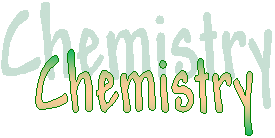|
Chapter
5 Questions and Problems
|
|
Chapter
5 Objectives
- to
summarize Dalton's atomic theory
- to
describe the size of an atom
- to
distinguish among protons, electrons, and nuetrons in terms
of relative mas and charge
- to
describe the structure of an atom, including the location of
the protons, electrons, and neutrons with respect to the nucleus
- to
explain how the atomic number identifies an element
- to
use the atomic number and mass number of an element to find
the numbers of protons, electrons, and neutrons
- to
explain how isotopes differ and why the atomic masses of elements
are not whole numbers
- to
calculate the average atomic mass of an element from isotope
data
- to
describe the origin of the periodic table
- to
identify the position of groups, periods, and the transition
metals in the periodic table
|
|
Chapter
5 Outline Framework: Use Concept Summary Page128 as an aid
- Atoms
- Early
models of the atom
- Just
how small is an atom?
- Structure
of the Nuclear Atom
- Electrons
- Protons
- Neutrons
- Atomic
nucleus
- Distinguishing
between Atoms
- Atomic
number
- Mass
number
- Isotopes
- Atomic
mass
- The
Periodic Table: Organizing the Elements
- Development
of the periodic table
- Modern
periodic table
- Periodic
Law
- Alkali
metals
- Alkaline
earth metals
- Transition
metals
- Metalloids
- Nonmetals
- Halogens
- Nobel
Gases
back
to top
|
|
Chapter
5 Terms:
- alkali
metal
- alkaline
earth metal
- atom
- atomic
mass
- atomic
mass unit (amu)
- atomic
number
- cathode
ray
- Dalton's
atomic theory
- electron
- group
- halogen
- inner
transition metal
- isotope
- mass
number
- metal
- metalloid
- neutron
- noble
gas
- nonmetal
- nucleus
- period
- periodic
law
- proton
- representative
element
- transition
metal
|
|
